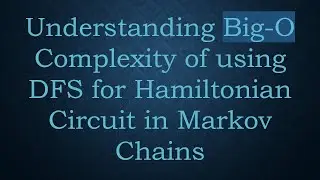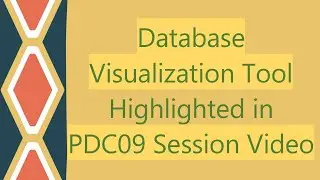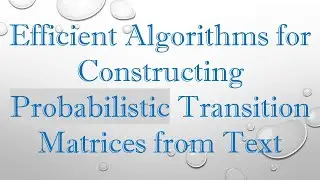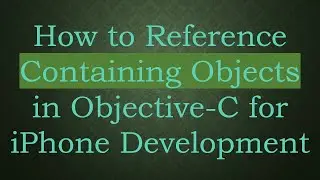Why a Two-Way Relationship is Crucial Between Person and Address Objects
Summary: Explore the significance of establishing a two-way relationship between Person and Address objects in object-oriented programming, and understand its impact on system design and data integrity.
---
Disclaimer/Disclosure - Portions of this content were created using Generative AI tools, which may result in inaccuracies or misleading information in the video. Please keep this in mind before making any decisions or taking any actions based on the content. If you have any concerns, don't hesitate to leave a comment. Thanks.
---
In the realm of object-oriented programming (OOP), understanding the intricate relationships between objects is fundamental to building dynamic and reliable systems. A common scenario in OOP involves linking Person and Address objects. This article delves into why establishing a two-way relationship between these objects is not only beneficial but often necessary for robust system design and data integrity.
Object Relationships: The Basics
Object relationships in programming define how different objects interact with one another. These relationships can be unidirectional or bidirectional. Unidirectional relationships imply that one object is aware of the other, whereas bidirectional relationships mean that both objects are aware of each other and can interact or reference one another directly.
Why a Two-Way Relationship?
Data Integrity and Consistency
A bidirectional relationship between Person and Address ensures data consistency and integrity across a system. When a Person object is linked to an Address, and the Address object is aware of the Person, any changes made on one side can be automatically reflected on the other. This reduces potential errors where a Person might be associated with outdated or incorrect address information.
Enhanced Navigation and Query Capabilities
With a two-way relationship, navigating and querying data becomes more efficient. Developers can quickly traverse from a Person object to their associated Address and vice versa. This is particularly advantageous in complex systems where such queries might be frequent and performance-intensive.
Improved Object Lifecycle Management
Managing the lifecycle of interconnected objects becomes straightforward with bidirectional associations. For instance, when a Person object is deleted or modified, the associated Address can be accordingly updated or removed, ensuring no orphaned data is left behind, which could lead to data anomalies.
Flexibility in Application Logic
When both the Person and the Address objects are aware of each other, it opens the door for more flexible operations and enhanced application logic. Such setups allow for complex conditional operations which involve both objects, providing a more comprehensive way to manage business rules and requirements.
Implementation Considerations
While implementing a two-way relationship between Person and Address objects, developers must be cautious about potential pitfalls such as circular references and memory leaks. It's essential to carefully manage these relationships to prevent such issues, possibly by leveraging modern programming paradigms or languages that inherently handle these complexities.
Moreover, while a two-way relationship offers numerous advantages, it's crucial to assess its necessity based on specific application requirements. Simple applications with minimal relational demands might suffice with unidirectional associations, thereby avoiding unnecessary complexity.
Conclusion
In summary, establishing a two-way relationship between Person and Address objects plays a significant role in safeguarding data integrity, enhancing navigation capabilities, and ensuring effective lifecycle management within an application. While not always necessary for every project, the benefits it offers make it an indispensable feature in many real-world applications, ensuring that both objects can seamlessly interact in a way that reflects the nuances of real-life data interactions.




![Best Dubstep Mix 2021 [Brutal Dubstep Drops],Gaming Dubstep Mix](https://images.videosashka.com/watch/hskp_5uxw00)
![Everyone Bullies Ui-mama With Ui-Beams (Koyori, Lize, Furen, Haneru, Patra, Siro, Aoi) [Eng Subs]](https://images.videosashka.com/watch/2kYfGFujdVs)

























